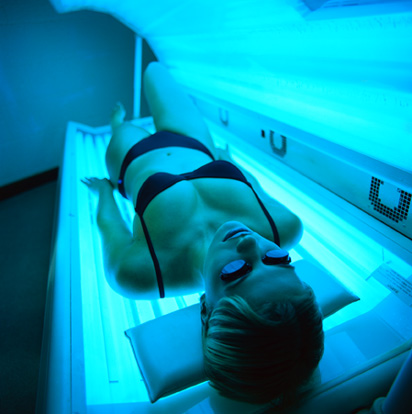 Prior to the 20th century tanned skin was associated with the underprivileged class. It was easy to spot who worked in the fields. Well-off Caucasians spent much of their time indoors. Wide-brimmed hats were worn outdoors to avoid altering their pale, nearly translucent skin.
Prior to the 20th century tanned skin was associated with the underprivileged class. It was easy to spot who worked in the fields. Well-off Caucasians spent much of their time indoors. Wide-brimmed hats were worn outdoors to avoid altering their pale, nearly translucent skin.
By the mid-1920s everything had changed. The poor now largely worked indoors. Leaders in fashion like Coco Chanel and Vogue magazine succeeded in glamourizing the look of bronzed skin.
Medical quackery convinced the public that the sun had a healing effect on the body. A tanned physique was now associated with good health. Pale individuals were perceived as sickly looking and weak.
Culture vs. Science
Through modern science we now recognize tanning for what it really is: a sign of skin damage. Skin cells that have been compromised by UV rays produce more pigment, achieving a darker skin tone.
Old perceptions persist. Many still associate tanned skin with good health. They are attracted to the allure of tanned skin due to cultural conditioning yet probably aren’t aware of the root of their preferences.
The tanning bed business is a very profitable one. Marketers know that as long as pop culture icons are tanned, the public will feel compelled to live up to this standard of beauty. Even those well aware of the skin damage caused by tanning beds ignore the “dark side” because arbitrary fashions often trump health concerns.
The Tragic Tale of Sun Damage
A Woman in her early 20s looks very pleasant as she starts to visit the tanning salon regularly. Complements are rich in supply. Acquaintances inquire if she recently went on vacation, giving her the feeling of elevated status. Initially positive reactions encourage the tanning regimen. She becomes a familiar face to the staff at the local tanning salon.
As skin damage progresses very slowly it is harder to notice its accumulation when she looks in the mirror. Over the years the chronic tanner’s skin starts to look haggard to people that she has spent time apart from. Those that were quick to give out complements in the beginning now avoid mentioning anything about her skin.
As more years pass and she reaches her mid-40s, her golden skin start to take on a leathery texture. Men once charmed by her beauty now cut conversations short. Friends gossip about how she is aging poorly behind her back.


Tanning Beds: No Better than the Sun
Despite the claims of tanning salons and tanning bed manufacturers, there is no distinct advantage to lying in a tanning bed rather than basking in the sun. Tanning beds give off the same UV rays that not only lead to prematurely aging skin but also increased risk of melanoma, the most dangerous form of skin cancer.
If you must have bronze skin the only safe way to do it is to pick up a sunless tanning product. Darkening lotions temporarily give you a tanned appearance so you don’t feel embarrassingly white at the beach or during outdoor events.